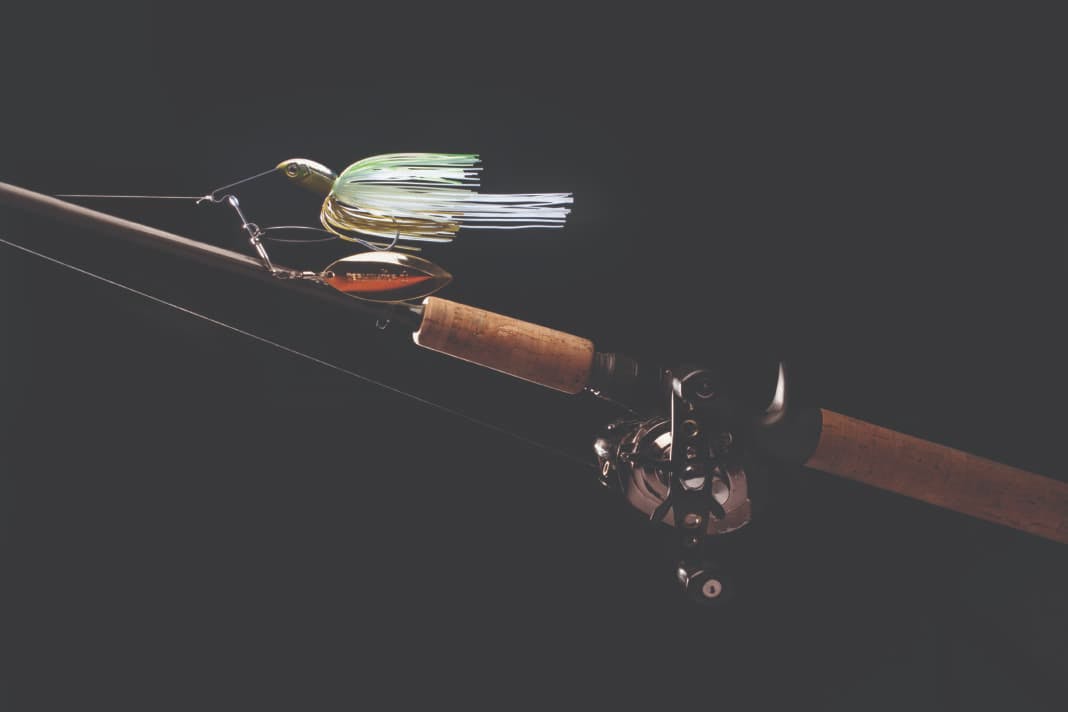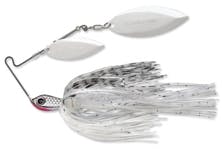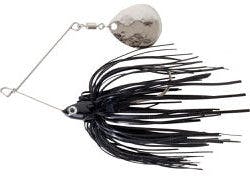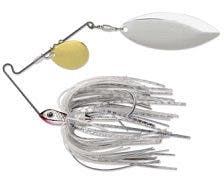
How To Use Spinnerbait: Selecting the Best Spinner Blades
The spinnerbait stands the test of time – it’s been a mainstay in tackle boxes for as long as people have been chasing fish. Recently though, there has been a decline in the use of spinnerbaits for the simple fact that new baits and innovative lures have come onto the market. Where someone used to throw a spinnerbait, they are now picking up a swimbait or crankbait.
Despite the ever-changing lure market, a spinnerbait shouldn’t be overlooked. It remains one of the most versatile baits on the market and can be fished year-round. Its versatility comes from the ability to change components to match the water and conditions you are fishing.
Nothing affects a spinnerbait more than tinkering with the blades. With the varying types, sizes, colors, and configurations, spinnerbait blades provide dramatic changes in how the bait fishes. Below, we dive into modifying your spinnerbait with the various blade options.
Blade Style
There are three main blade shapes, each with its own purpose. Properly matching the type of blade to the conditions you are fishing will put more fish in the boat.
The three main blade types are Willow Leaf, Colorado, and Indiana.
Willow Leaf blades are longer and have a slender shape. They kick off the least amount of vibration, making it the perfect choice for clear water situations when fish are primarily feeding with sight. The slender profile mimics many of the baitfish in our lakes and rivers. The shape also allows the bait to move through the water faster, preventing fish from getting a good look at it as it cruises past.

Willow blades should also be used when you want to burn the bait back to the boat in warmer water where Bass are more willing to chase prey. With the least amount of resistance in the water, they also make a great choice when fishing deeper. The bait will not want to lift as much as it will with other blades. Lastly, the longer profile is also a great option when fishing through vegetation, as it helps the bait slide through without getting hung up.
Colorado blades are the complete opposite of the Willow with an almost perfectly round shape. It produces the most amount of vibration in the water and should be used for murky or muddy water situations. The loud thump produced by these blades allows Bass to locate the bait with their lateral line when they are primarily feeding by sound/feel. The shape of these blades also mimics the shape of panfish and are a great option when the primary forage are smaller Bluegill, Sunfish, and Crappie.

Pictured: Mission Tackle Spinnerbait Colorado
Colorado blades should be used when you want to work the bait slowly back to the boat in colder water while the Bass are more lethargic. With a lot of water displacement, these blades will want to rise up in the water column as you reel faster which makes it a great option in shallow water applications. Colorado’s work best in open water or around hard structure like rock and docks since they are more likely to get hung up in vegetation.
Indiana blades are the happy medium between the Willow and Colorado with their teardrop shape. This blade makes a great option when you don’t want to completely commit one way or the other. They are perfect for medium retrieves in warming or cooling water. They’re also a great option for slightly stained water where there are several feet of visibility.
Blade Size
All three blade types come in different sizes and there are several reasons to play around with different optins. Common sizes range from 0 – 8 with eight being the largest.
For Willow blades, the main reason to adjust size is to match the hatch. Since you will be using these blades when Bass are feeding with sight, finding the appropriate size blade that matches the size of the forage in your body of water will help get more bites. Bass will relate better and feel more comfortable attacking something that has a similar profile to what they usually feed on.
For Colorado blades, size will primarily determine the amount of thump the bait has in the water. When Bass are feeding with their lateral line and seem finicky, reducing blade size will make that bait seem less powerful. In extra muddy situations, heavy current, or lots of wind, a bigger blade may be needed to allow the fish to feel your bait from far away.
For all blade types, increasing the size will also allow you to run the bait slower and provide more lift in the water column. Being able to determine what the fish are reacting to and matching that with the current conditions will help you select the proper size blades.
Blade Color
Blades come in three primary color options: Gold, Silver, and Painted.
Gold blades are a great option in low light conditions. Whether it be slightly stained water, cloudy days or early morning/late evening, the gold blade provides the benefit of a darker profile while maintaining some flash. They should also be utilized when the primary forage has a goldish tint to it (think Golden Shiner).
Silver blades will perform best in clearer water and sunny conditions. This color is all about the flash which can imitate many different types of baitfish. Without letting the Bass get a good look at the bait, a silver blade will look like something they regularly eat. A perfect example would be during the Shad spawn.
Painted blades can be used in many different situations. The only downside is the lack of a natural flash like you get from gold and silver blades. White, black, red or orange are great options for really muddy water and night fishing. Solidly painted blades are ideal for giving the bait contrast and will help fish locate it as it comes by.
The other option for painted blades is a color pattern that imitates specific types of forage (like a Sexy Shad or Blue Back Herring pattern). These blades are best used in clearer water.
Blade Configuration
There are three main types of blade configurations: Single, Double, or Tandem.
Single blades are just that – one Willow, Indiana, or Colorado attached to the body of the bait. Single-bladed baits should be used when a smaller presentation is needed. If the bite has been tough, or you keep getting short strikes, moving to a smaller profile with a single blade will be less intrusive.
Double-bladed baits have two of the same style blades. It can be a double Willow, double Indiana, or a double Colorado. Depending on the style of blades, doubling up causes a different effect. Running double Willows gives the spinnerbait a bait school look. If Bass arechomping hard, adding that second blade could increase your strike percentage by looking like an easy 2 for 1 meal. Double Colorado will give you extra lift and allow you to work the bait slower. If you are looking for a more subtle presentation in dirty water you could go to a double Colorado with much smaller blades, giving you the same lift and speed as a larger single Colorado.

Pictured: Terminator Super Stainless Spinnerbait
Tandem is when you have two different styles of blades on the bait and is typically the most versatile of the three configurations. Whether it is a tandem Willow/Colorado or Willow/Indiana, each pairing will allow you to tweak the presentation ever so slightly to your liking.
There are virtually unlimited options with different blade styles, sizes, and colors. The two most import pieces of the puzzle to put the winning combination together is understanding the current conditions you are fishing and paying attention to what the fish are telling you. With that in mind, there is no reason not to catch fish any time of the year on a spinnerbait! Give it a shot, and let us know how it goes!